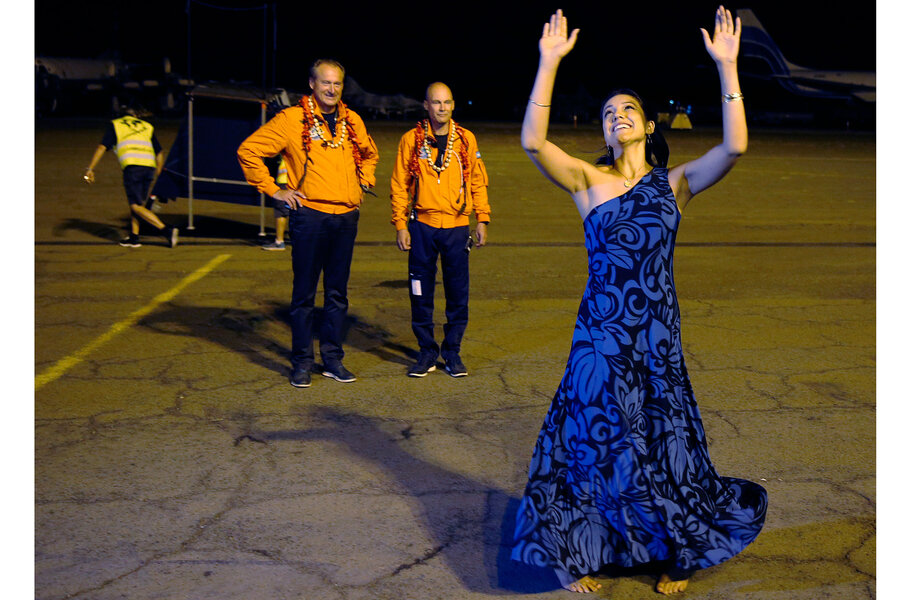'Pioneering' solar plane flies another day
Loading...
The fuel-free plane Solar Impulse 2 embarked from Hawaii Thursday to continue its rocky but intrepid journey around the world powered only by the sun.
Its mission, the pilots have said, is inspiration.
“When the Apollo astronauts went to the moon, it wasn't to launch tourism on the moon and open hotels and make money,” the plane’s pilot, Bertrand Piccard, told Wired in December 2014. “It was to inspire the world.”
It's been a lengthy journey filled with a myriad of obstacles for the Swiss-made plane, which left the United Arab Emirates in March 2015, and it has yet to reach its goal of flying around the world without a gallon of jet fuel. The pilots intended to stop only in Oman, India, China, Myanmar, Hawaii, Arizona, New York, and Morocco, before returning to Abu Dhabi, but they were forced to land in Japan in June 2015 because of bad weather.
The pilots grounded the Solar Impulse 2 again in Hawaii because its solar panels were damaged by the trip from Japan. They repaired and tested the solar plane from July 2015 until Thursday.
Its shaky liftoff from Hawaii to California, the ninth leg of the global trek, was delayed on Thursday because the ultra-light plane cannot tolerate winds higher than 10 knots, but it finally lifted off around 5:30 a.m. The destination of this three-day Pacific crossing is Mountain View, Calif., in the heart of Silicon Valley, and Mr. Piccard said he looked forward to landing "in the middle of the pioneering spirit."
Their "pioneering" technology includes their one-seat lightweight plane with 17,248 solar cells that supply its renewable lithium polymer batteries, enabling it to fly day and night, The Christian Science Monitor reported last year.
André Borschberg, the pilot from Japan to Hawaii, has flown planes for 40 years and says he relishes the unique experience of the Solar Impulse 2. Although flying an aircraft without fuel is stressful – he never sleeps more than 20 minutes at a time while flying, in case the engine needs maintenance – he called the flight "a privilege," as The Christian Science Monitor's Gregory Lamb wrote last month:
While the trip shows the potential for solar-powered aircraft, commercial applications in aviation are still a ways into the future, Borschberg acknowledged in an interview during a visit to the newsroom of The Christian Science Monitor.
But what’s being learned now can help improve the way companies design products for use on the ground, he says, such as more-efficient homes, cars, and factories. The electric motor in the Solar Impulse 2 is 97 percent efficient in its use of energy, he says. Today’s automobiles are perhaps 30 or 40 percent efficient.
From California, Mr. Piccard hopes to fly the Solar Impulse 2 across the United States and end with a ceremonial landing at New York’s John F. Kennedy International Airport. He plans to fly over the Atlantic Ocean toward Europe in June.
This report contains material from the Associated Press.








